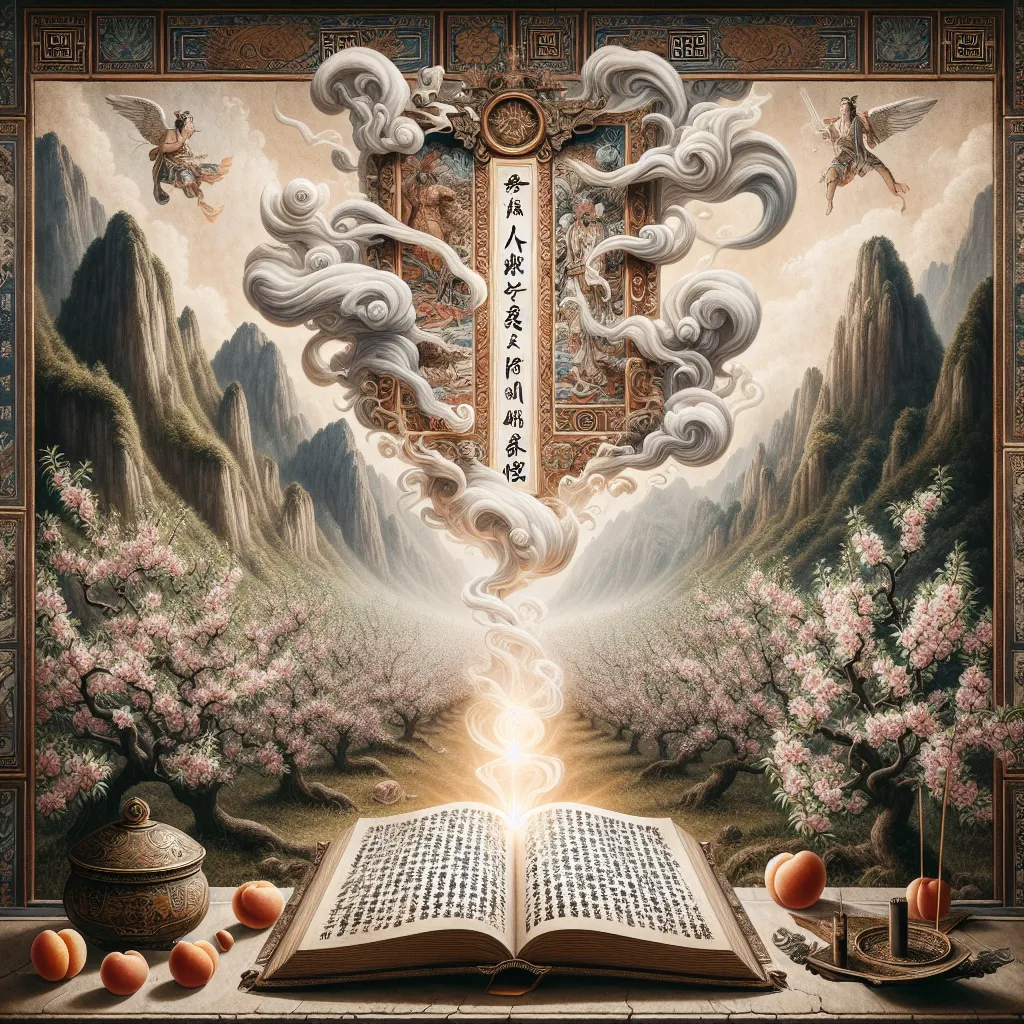
- Published on
- Authors

- Name
- You
The Taoist Canon: Exploring the Sacred Texts of Taoism
Taoism, a spiritual and philosophical tradition of Chinese origin, is built upon the teachings outlined in its sacred texts. The Taoist Canon, also known as the "Daozang," is a comprehensive collection of these texts, reflecting the depth and diversity of Taoist thought. This article delves into the major texts within the Taoist Canon, exploring their teachings and offering a holistic guide to Taoist literature.
The Structure of the Taoist Canon
The Taoist Canon is an extensive anthology, organized into three main sections known as the "Three Caverns," each representing different aspects of Taoist teachings:
- Cavern of Perfection (Dongzhen)
- Cavern of Mystery (Dongxuan)
- Cavern of Spirit (Dongshen)
Major Texts of the Taoist Canon
1. Tao Te Ching (Dao De Jing)
Author: Laozi
Overview: The Tao Te Ching is perhaps the most renowned Taoist text, attributed to the sage Laozi. It consists of 81 short chapters, blending poetry and philosophy to convey the essence of the Tao (the Way) and its manifestation in virtue (De).
Key Teachings:
- Wu Wei (Non-Action): Emphasizes effortless action in harmony with the natural order.
- Simplicity: Advocates for simplicity in thought and action to attain spiritual clarity.
- Duality: Explores the balance between opposites, such as yin and yang.
2. Zhuangzi (Chuang Tzu)
Author: Zhuang Zhou
Overview: The Zhuangzi is a rich tapestry of parables, anecdotes, and philosophical discourses, reflecting the spontaneous and relativistic nature of life.
Key Teachings:
- Relativity of Perspectives: Encourages an understanding that truth can vary based on perspective.
- Unconventional Wisdom: Emphasizes the value of intuition and spontaneity over rigid intellectualism.
- Harmony with Nature: Promotes living in accordance with the natural world.
3. Liezi (Lieh Tzu)
Author: Attributed to Lie Yukou
Overview: The Liezi is a collection of dialogues and stories, often seen as a complementary text to the Tao Te Ching and Zhuangzi.
Key Teachings:
- Transcendence of Knowledge: Suggests that true wisdom goes beyond intellectual understanding.
- Reflection on Mortality: Discusses the nature of life and death, and the importance of living a meaningful life.
- Magic and Mysticism: Contains accounts of mystical experiences and the supernatural.
Taoist Rituals and Practices
1. Internal Alchemy (Neidan)
Internal Alchemy refers to the practice of refining and cultivating the human body and spirit to achieve immortality. This involves a series of meditative and physical exercises aimed at harmonizing internal energies.
2. External Alchemy (Waidan)
External Alchemy involves the creation of elixirs from herbal and mineral substances. Historically, Taoist alchemists sought to create a tangible elixir of immortality, although these practices often led to advancements in early Chinese medicine and chemistry.
3. Tai Chi and Qigong
These practices combine martial arts, meditation, and controlled breathing techniques to promote physical health and spiritual well-being.
Blending Ancient Wisdom with Modern Science
Modern science has begun to uncover the profound insights encapsulated in Taoist practices. For instance, studies in neuroplasticity and mindfulness strongly correlate with Taoist meditation practices. Tai Chi and Qigong are recognized for their benefits in cardiovascular health, balance, and mental clarity.
Table: Correlation Between Taoist Practices and Scientific Discoveries
| Taoist Practice | Modern Scientific Correlation | Health Benefits |
|---|---|---|
| Meditation (Chán) | Mindfulness, Neuroplasticity | Reduced stress, enhanced cognitive function |
| Tai Chi | Kinesiology, Gerontology | Improved balance, cardiovascular health |
| Herbal Medicine | Pharmacology, Herbal Botany | Enhanced immune function, anti-inflammatory |
Conclusion
The Taoist Canon is a treasure trove of spiritual and philosophical wisdom. Its teachings encourage a harmonious existence, balancing the material and spiritual realms. By integrating these ancient principles with modern scientific insights, we can enrich our understanding of both domains, fostering a holistic approach to health, well-being, and spiritual fulfillment.
